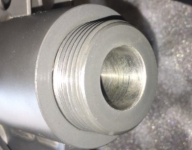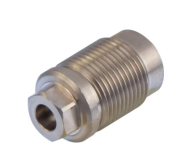Youtube video going over a .50 cal MSR exploding on a guy.
He sustained life-threatening injuries, but he did survive and reports he will make a full recovery.
My reason for posting this is that I am very dubious of his claims that it was a 'freak accident' caused by old ammo that had been 'tampered' with.
I see he had a difficult extraction of the prior round and just tossed the case away with no inspection.
The gun is completely blown apart (at 4:31) so it must have been a very violent overpressure. He claims the manufacturer says it would take 30k psi over spec to cause the chamber to be blown out.
Any ideas as to what happened here? I'm having a hard time with that much overpressure out of surplus ammo.
[edit] oops... this should probably be in the rifle section. Apologies for the extra work, mods.
He sustained life-threatening injuries, but he did survive and reports he will make a full recovery.
My reason for posting this is that I am very dubious of his claims that it was a 'freak accident' caused by old ammo that had been 'tampered' with.
I see he had a difficult extraction of the prior round and just tossed the case away with no inspection.
The gun is completely blown apart (at 4:31) so it must have been a very violent overpressure. He claims the manufacturer says it would take 30k psi over spec to cause the chamber to be blown out.
Any ideas as to what happened here? I'm having a hard time with that much overpressure out of surplus ammo.
[edit] oops... this should probably be in the rifle section. Apologies for the extra work, mods.
Last edited:


